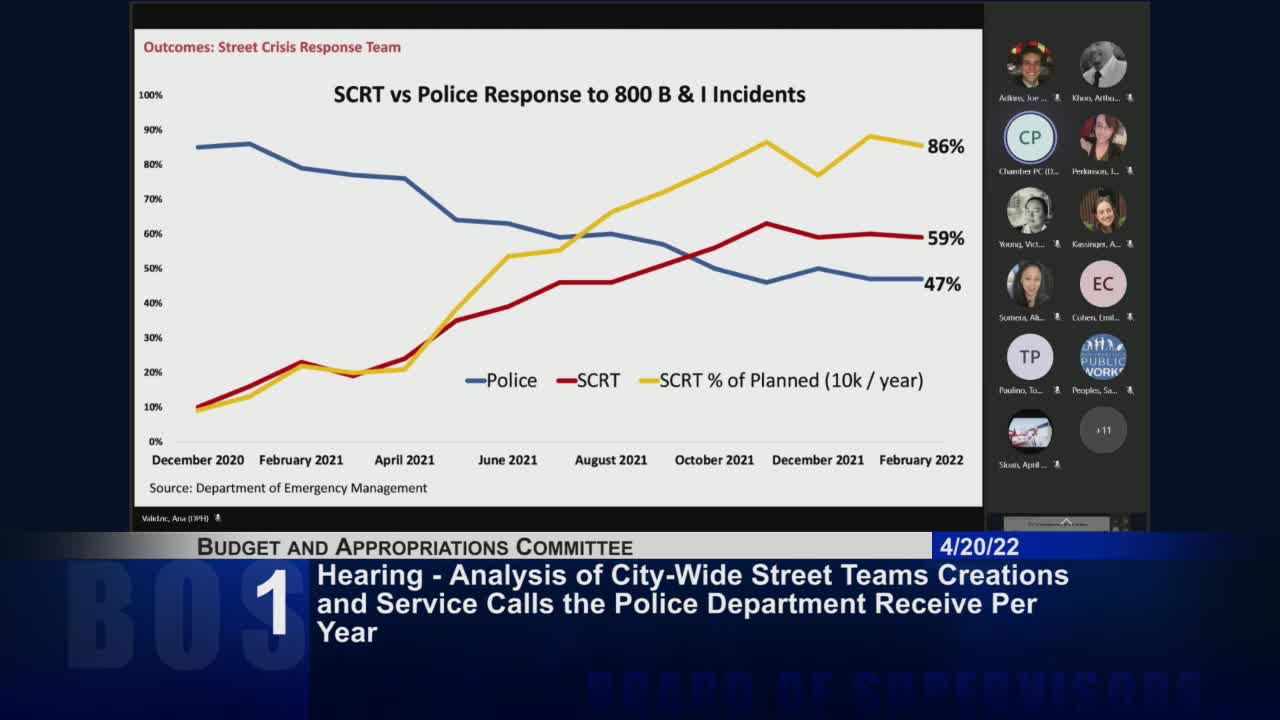San Francisco's street crisis response team improves dispatch protocols for mental health emergencies
April 20, 2022 | San Francisco County, California
Thanks to Scribe from Workplace AI and Family Portal , all articles about California are free for you to enjoy throughout 2025!

This article was created by AI using a video recording of the meeting. It summarizes the key points discussed, but for full details and context, please refer to the video of the full meeting. Link to Full Meeting
The meeting detailed the current dispatch process for 911 and non-emergency calls. Dispatchers assess the nature of the emergency and determine if the situation involves a person in crisis. Key triage questions are asked to evaluate potential dangers, including the presence of weapons or medical issues. Depending on the responses, calls are categorized for appropriate police or medical responses.
A notable change in protocol is set for June, where emergency medical dispatch (EMD) protocols will be implemented for police-related calls. This shift aims to streamline the response process, ensuring that calls are handled more efficiently. The EMD system uses structured questioning to determine the specific needs of each situation, which could lead to varied responses, including dispatching the Street Crisis Response Team (SERT) or medical units.
The meeting also reported on the performance of the Street Crisis Response Team since its inception in November 2020. Initially, response times averaged 17 minutes, but improvements have led to a current average of 14 to 15 minutes for the six units operating citywide.
Overall, the discussions underscored the city's commitment to enhancing emergency response for individuals in crisis, reflecting a proactive approach to addressing the growing challenges faced on the streets of San Francisco.
Converted from San Francisco County - Video Open Video Only in Windows Media Player - Jul 04, 2025 meeting on April 20, 2022
Link to Full Meeting
Comments
View full meeting
This article is based on a recent meeting—watch the full video and explore the complete transcript for deeper insights into the discussion.
View full meeting